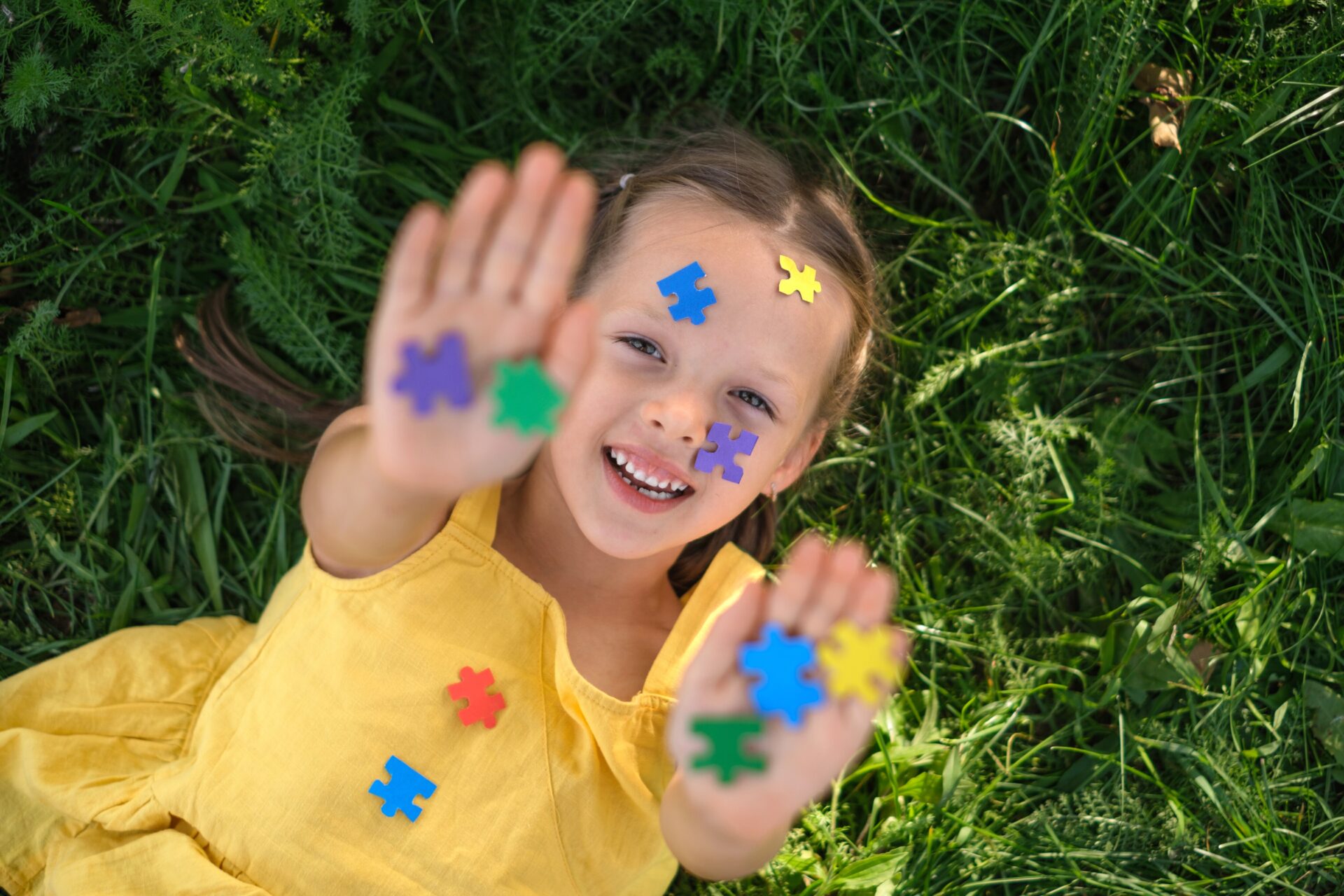Autism Spectrum Disorder Research and Resources
Autism spectrum disorder (ASD) is a condition characterized by impaired social communication as well as restricted and repetitive behaviors. It is considered a neurodevelopmental disorder, and symptoms typically appear between 18 and 36 months of age, though some people are not diagnosed until later in life.
Today, it is recognized as a spectrum ranging from mild to severe, with behaviors varying substantially from person to person. Understanding the research behind the disorder is essential for supporting people on all parts of the spectrum.

Understanding Autism Spectrum Disorder
Autism spectrum disorder affects how a person communicates, interacts socially, and experiences the world. The term “spectrum” reflects the wide variation in abilities and challenges people with autism may experience. While some people may require significant daily support, others live independently and excel in specific areas.
It’s important to understand that autism is not a disease or something that needs to be “cured.” Rather, it is a different way of thinking and processing information. ASD affects three main areas, known as the triad of impairments, which include challenges with communication, social interaction, and repetitive behaviors [1].
Communication in Autism Spectrum Disorder
People with autism often struggle with verbal and nonverbal communication. This can range from the complete absence of spoken language to difficulty understanding nuances like tone, sarcasm, or figurative speech. Some may use gestures or picture systems, while others develop fluent speech but still miss social context.
Even when speech develops, it may not be used effectively in back-and-forth conversation, and some people may use autism scripting as a way to help communication. Further, echolalia, which is a term for repeating words or phrases, is also common and may serve as a form of processing language or expressing needs [1].
Common communication differences in ASD may include [1]:
- Delayed or absent speech development
- Literal interpretation of language or difficulty with figurative speech
- Limited use of gestures, eye contact, or facial expressions
- Repetitive language (echolalia)
- Difficulty initiating or maintaining conversations
Understanding these communication differences is important, as many behaviors interpreted as “noncompliance” may actually stem from unmet communication needs. Tools such as augmentative communication systems (strategies or devices that help people communicate) or speech therapy can support expression and comprehension [1].
Social Interaction in Autism Spectrum Disorder
People on the autism spectrum often experience difficulty with reciprocal social interactions. This includes challenges in understanding personal space, interpreting facial expressions, or initiating conversation. Many people with autism don’t intuitively grasp unspoken social rules, which can lead to feelings of isolation or rejection, particularly during childhood and adolescence [1].
Common social difficulties may include [1]:
- Limited eye contact or facial expressions during conversations.
- Difficulty interpreting body language, tone of voice, or social cues.
- Trouble initiating or sustaining back-and-forth interaction.
- Lack of awareness of personal boundaries or appropriate physical proximity.
- Challenges in adjusting behavior across different social contexts (e.g., school versus home).
It’s important to note that these social differences should not be mistaken for a lack of interest in connection. People with autism spectrum disorder typically want friends and social interaction, but they may need structured environments or explicit instruction to build and maintain them.
Repetitive Behaviors and Restricted Interests
A key characteristic of autism spectrum disorder is the presence of repetitive behaviors and intensely focused interests. These actions are not random: they often serve important roles in helping people cope with overwhelming sensory input. They may also create a sense of predictability in a world that may feel chaotic to them [1].
Common patterns include [1]:
- Repetitive movements, known as stimming, which include hand-flapping, rocking, or spinning objects.
- Intense attachment to routines or rituals, with feelings of distress if they are disrupted.
- Highly focused interests in specific topics or objects, sometimes to the exclusion of other activities.
- Repetitive use of objects (e.g., lining up toys, opening and closing doors).
- Sensory-seeking or sensory-avoidant behaviors related to light, sound, texture, or movement.
While these behaviors may appear unusual to people who do not have autism, they are often meaningful and purposeful. Supporting people with autism means recognizing the role these patterns play and creating environments that offer both structure and flexibility.
Causes and Risk Factors of Autism Spectrum Disorder
While it is not known exactly what causes autism, research shows that it likely develops from a mix of genetic and environmental factors, especially during pregnancy and early life [2].
Some known risk factors include [2]:
- Family history: About 15–20% of the younger siblings of children with autism are also diagnosed. The chance is even higher for identical twins.
- Prenatal influences: Exposure to certain medications during pregnancy, such as valproic acid, or infections, such as rubella, may slightly raise the risk.
- Parental age: Having a baby at an older age, especially for fathers, may be linked to a higher chance of autism.
- Birth complications: Preterm birth, low birth weight, or other complications may play a small role.
These factors do not cause autism on their own, but they might increase the chances when combined with genetics.
Scientists are also investigating how the gut and brain may be connected in autism. A large review of research looked at gut bacteria in people with autism and found noticeable differences compared to people without autism [3].
These bacteria, which help with digestion and affect the immune system, may also play a role in brain function. The researchers suggest that these gut differences could be linked to certain traits in autism, such as digestion issues, behavior patterns, or sensitivity to food [3]. This doesn’t mean the gut causes autism, but it may help explain why some people with autism share similar biological features.
Diagnosis of Autism Spectrum Disorder
Autism spectrum disorder is diagnosed by observing how a person communicates, interacts, and behaves. There is no single medical test for it. Instead, healthcare providers rely on behavioral signs and developmental history [2].
The process usually begins with developmental surveillance during routine pediatric visits. This means that doctors watch for early signs in the child, such as delayed speech, limited eye contact, or difficulty engaging with others. If concerns arise, a formal screening tool like the M-CHAT (Modified Checklist for Autism in Toddlers) may be used.
If screening results suggest autism, a child is referred for a comprehensive evaluation. This involves a team of specialists, such as developmental pediatricians, child psychologists, and speech-language pathologists, who assess the child’s behavior and development in more detail.
While autism can be reliably diagnosed by age two, many children are diagnosed later. That said, early diagnosis gives children access to support and therapies that can improve communication, learning, and social skills at an important age [2].
Mental Health Impacts of Autism Spectrum Disorder
Mental health challenges are common in autism spectrum disorder; they often begin in childhood and continue into adulthood. One major factor is a practice called camouflaging, which is when a person hides or masks their autistic traits to appear more “neurotypical” (non-autistic) in social or professional situations [4]. This might include forcing eye contact, mimicking small talk, or suppressing repetitive behaviors.
While camouflaging may help avoid bullying or judgment in the short term, it can be emotionally exhausting. Research shows that camouflaging is linked to the following possible difficulties [4]:
- Increased anxiety and depression
- High levels of emotional burnout
- Suicidal thoughts and feelings of isolation
Many autistic adults describe constantly analyzing their behavior to avoid standing out. This effort, which is often invisible to others, can take a toll on mental health.
Mental health care that respects and accommodates autistic experiences can make a meaningful difference. It may include the following [4]:
- Supportive therapy with mental health professionals who specialize in ASD.
- Sensory-friendly environments that can reduce feelings of overwhelm.
- Focus in therapy on acceptance and self-understanding rather than camouflaging or masking.
Recognizing the unique emotional needs associated with ASD is key to building inclusive support systems and helping people feel understood rather than managed.
Resources for Autism Spectrum Disorder
In addition to formal autism treatment options and national advocacy organizations, everyday support often comes from community-level resources. These local sources of support can help provide assistance and information to people with autism spectrum disorder and their families.
They include parent support groups, local autism networks, religious or spiritual communities, and peer mentoring programs, all of which can offer emotional support and practical advice.
Research shows that when families have access to trusted spaces to share experiences, they’re better equipped to manage stress and advocate for their loved ones’ needs [5]. Families may also benefit from family-centered workshops that focus on communication tools, coping strategies, and building routines that work at home.
Below are some trusted organizations and resources that offer support, education, and advocacy for people living with autism and their families across the United States.
- Autistic Self Advocacy Network (ASAN): An autistic-led nonprofit that advocates for disability rights and offers resources created by and for autistic people.
- Easterseals: Easterseals autism service focuses on empowerment through therapy, social activities, and career skills programs.
- The CDC’s “Learn the signs. Act early.” program: This CDC program provides free tools for early developmental screening and connects families to early intervention services.
- CommunicationFIRST: This is a disability-led nonprofit organization dedicated to protecting and advancing the civil rights of people with speech-related disabilities, including ASD.
Living with Autism Spectrum Disorder
Living with autism presents unique challenges, but access to inclusive communities, supportive relationships, and tailored resources can reduce stress and improve well-being. Social connection plays a key role: when people with autism feel accepted and understood, their confidence and well-being grow.
Whether through peer networks, local programs, or national organizations, finding the right mental health support can help people with autism navigate daily challenges more effectively. No one should have to do it alone.
Early diagnosis, understanding individual needs, and providing the right tools and services are all critical in creating a world where people with autism can thrive. With the right support, people with autism can build meaningful connections, reach their goals, and improve their overall quality of life.
- Sicile-Kira, C. (2014). Autism spectrum disorder (revised): The complete guide to understanding autism. Penguin Group.
- Christensen, D., & Zubler, J. (2020). CE: From the CDC: Understanding autism spectrum disorder. AJN The American Journal of Nursing, 120(10), 30-37.. DOI: 10.1097/01.NAJ.0000718628.09065.1b Accessed May 20 2025
- West, K. A., Yin, X., Rutherford, E. M., Wee, B., Choi, J., Chrisman, B. S., … & Iwai, S. (2022). Multi-angle meta-analysis of the gut microbiome in Autism Spectrum Disorder: a step toward understanding patient subgroups. Scientific Reports, 12(1), 17034.DOI: 10.1038/s41598-022-21327-9 Accessed May 20 2025
- Bradley, L., Shaw, R., Baron-Cohen, S., & Cassidy, S. (2021). Autistic adults’ experiences of camouflaging and its perceived impact on mental health. Autism in adulthood, 3(4), 320-329. DOI: 10.1089/aut.2020.0071 Accessed May 20 2025
- Yaacob, W. N. W., Yaacob, L. H., Zulkifli, M. M., & Muhamad, R. (2022). A journey towards resilience: Coping strategies adopted by parents with children having autism spectrum disorder in northeast Malaysia. International Journal of Environmental Research and Public Health, 19(4), 2458. https://doi.org/10.3390/ijerph19042458 Accessed May 20 2025
The Clinical Affairs Team at MentalHealth.com is a dedicated group of medical professionals with diverse and extensive clinical experience. They actively contribute to the development of content, products, and services, and meticulously review all medical material before publication to ensure accuracy and alignment with current research and conversations in mental health. For more information, please visit the Editorial Policy.
MentalHealth.com is a health technology company guiding people towards self-understanding and connection. The platform provides reliable resources, accessible services, and nurturing communities. Its purpose is to educate, support, and empower people in their pursuit of well-being.
Areesha Hosmer is a writer with an academic background in psychology and a focus on Cognitive-Behavioral Therapy (CBT).
Shivani Kharod, Ph.D. is a medical reviewer with over 10 years of experience in delivering scientifically accurate health content.
The Clinical Affairs Team at MentalHealth.com is a dedicated group of medical professionals with diverse and extensive clinical experience. They actively contribute to the development of content, products, and services, and meticulously review all medical material before publication to ensure accuracy and alignment with current research and conversations in mental health. For more information, please visit the Editorial Policy.
MentalHealth.com is a health technology company guiding people towards self-understanding and connection. The platform provides reliable resources, accessible services, and nurturing communities. Its purpose is to educate, support, and empower people in their pursuit of well-being.


